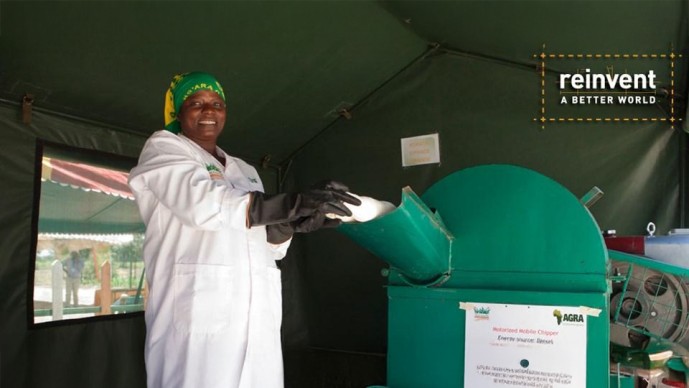Saving Labor is Saving Time: The Grand Challenge of Accessible, Appropriate Farming Technology
- Alesha Black, Oct 5, 2012

Do you ever stop to think about the value of your extra time when your washing machine is cleaning your clothes instead of you standing over a tub of water for a few hours? Or, have you considered all the things you're able to do because you can simply buy your food instead of growing it yourself?
Time spared is precious and you have it because innovation has marched forward, creating a host of labor-saving devices and technologies in your daily life. Labor-saving devices are often not available to the farm families I visit with across Africa, despite the obvious need, especially for women, who bear much of the labor in the household and in taking care of children, as well as hard work on the farm. At different times in the season the work changes, but it remains long and often physically exhausting: preparing the soil (often using oxen), planting (often by hand), weeding (by hand), harvesting (by hand), shelling/hulling (often by hand), winnowing (by hand), grinding to flour (if eaten at home, by hand), and then finally, cooking and eating. Innovative, accessible, labor-saving devices and technologies are clearly needed to improve the livelihoods of farm families.
Recently, I had the privilege of visiting a village supported by Farm Concern International (FCI) and funded by AGRA with Melinda Gates and Kofi Annan. The project is impressive and I encourage you to look at Melinda's facebook page to see recent photos and learn more.
The village, in Mbguni, Tanzania, showed the transformation that can come with a bit of labor-saving technology. This particular program focuses on cassava, which is both a crop that is regularly consumed by rural households in many countries but also one that could be brought to market in many forms - fresh, dried chips, and flour to name a few. Cassava roots are tough and wet like a potato so making them into dried chips and flour is made much more feasible with good equipment. The chipper can process 10 metric tons of cassava per day and the small mill can grind 14.4 metric tons of product to flour, per day. Not only does this save hours if not days of time, the machines produce a product that is higher quality and fetches a better price for the farmers. That higher price can translate to school fees, medicine, and new opportunities.
Labor-saving devices must be scaled up in Africa, as they have in farming systems elsewhere in the world. Many factors have kept this from happening: equipment that is not designed with the user in mind, it isn't affordable, there's a lack of spare parts suppliers, high costs of energy, and often a lack of financing mechanisms, to name a few.
But we know appropriate innovations are in reach. That's why I'm excited to share that we've just launched a call for proposals for agriculture related labor-saving devices and technologies through our Grand Challenges Explorations (GCE) program, which only requires a great idea and a two page proposal to be considered.
I'd encourage you to take a look and share the GCE call with your friends and colleagues. Ultimately, innovations must be seeded and scaled through many channels to change the lives farmers in so many different contexts, but we look forward to seeing how this effort can spark that process so rural families find themselves able to walk toward the opportunities they choose rather than stay beholden to difficult, physical work - purely out of necessity. Share your great idea with us. Learn more about our GCE initiative here.